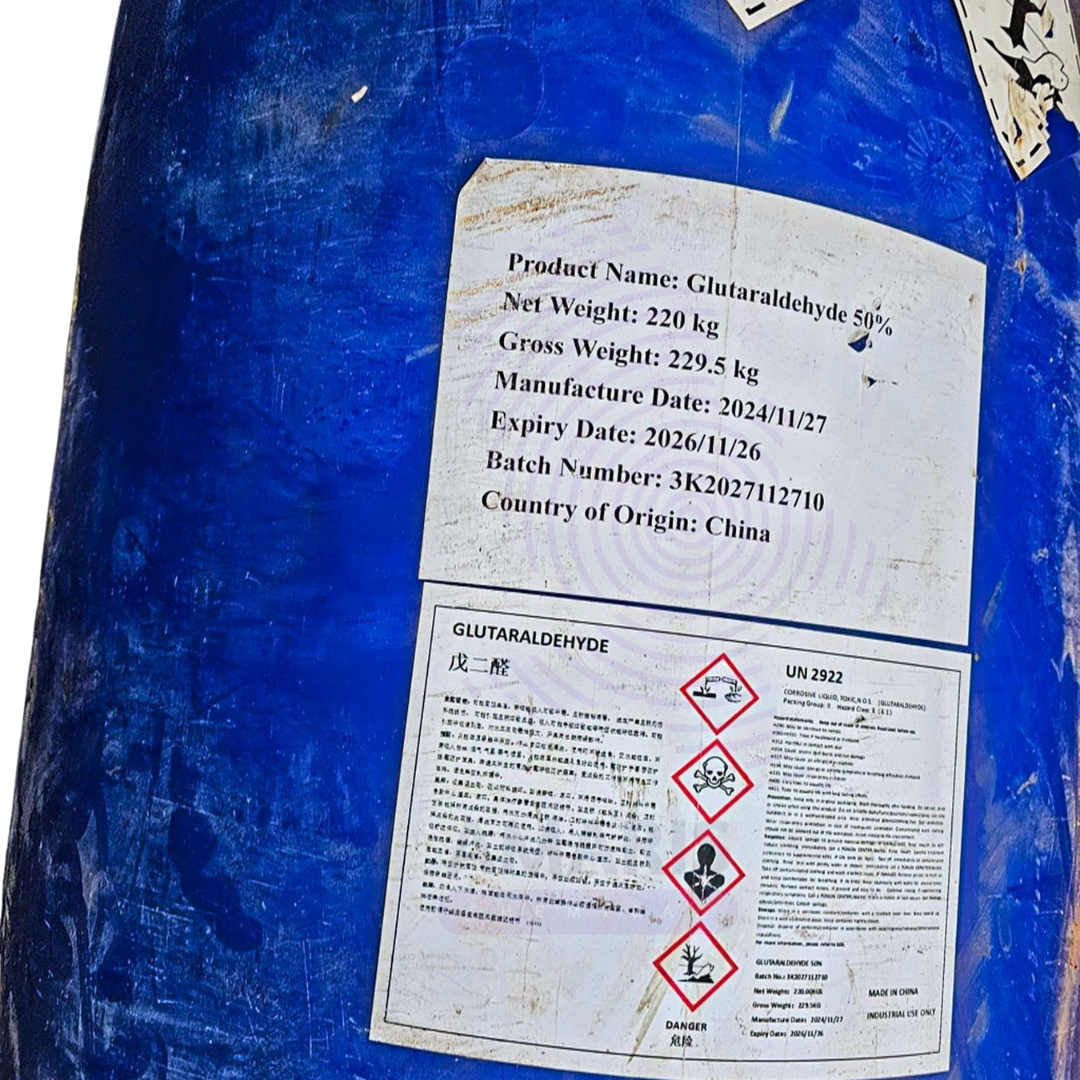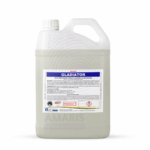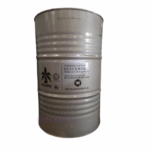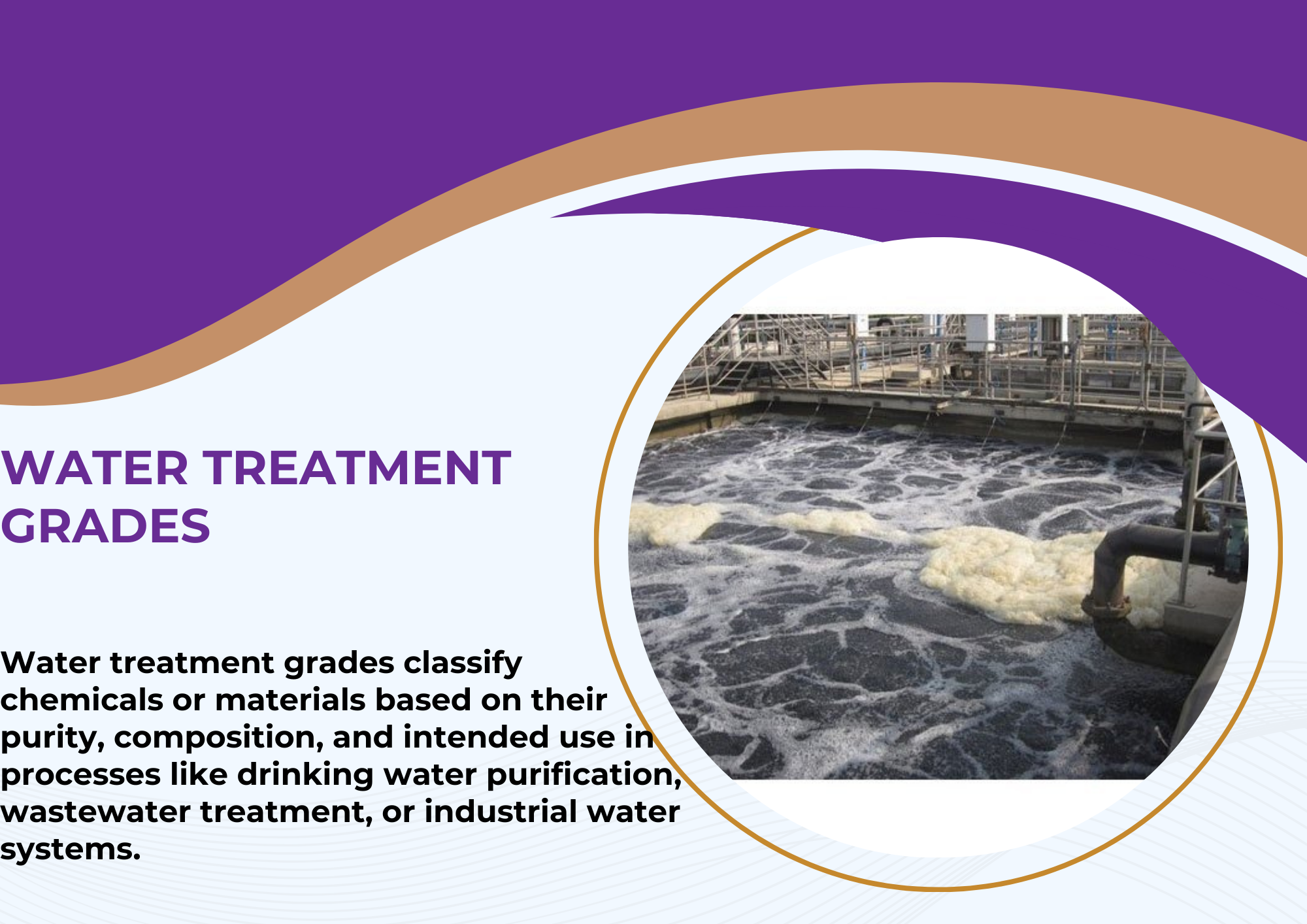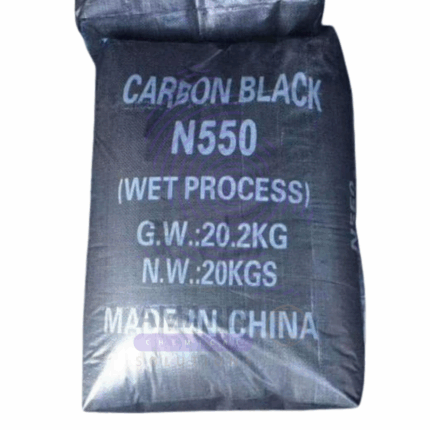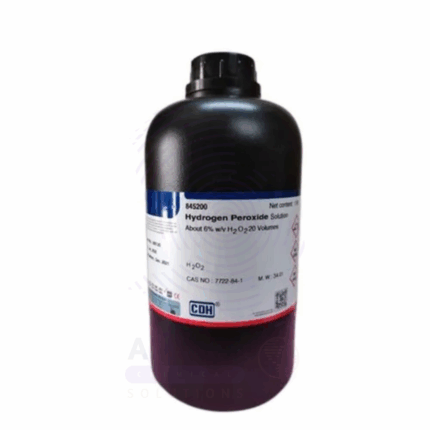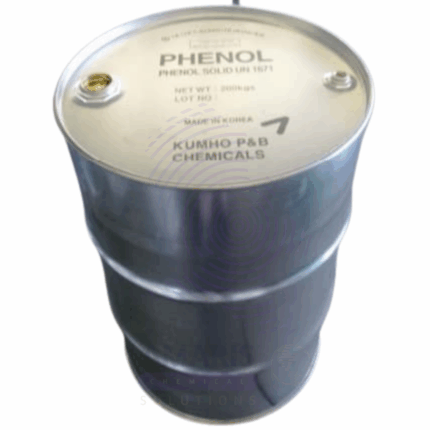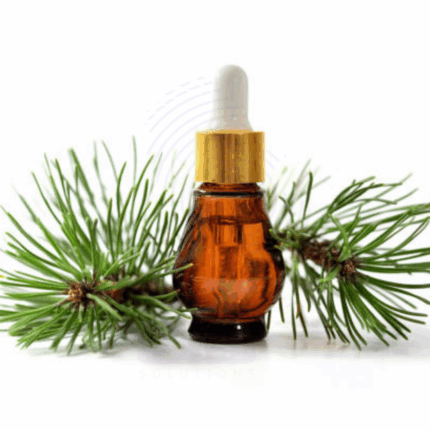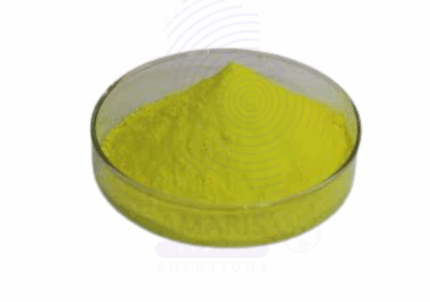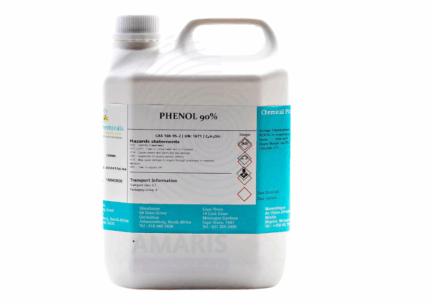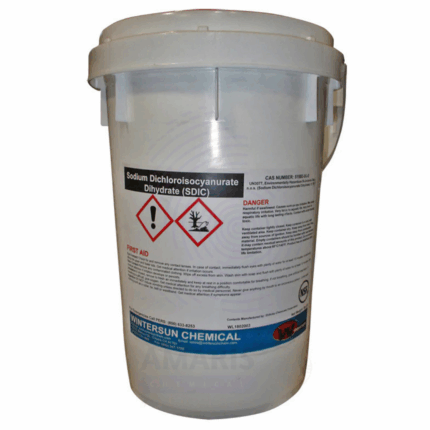Glutardehyde
Whatsapp Order
Glutardehydeis a potent biocidal agent and chemical sterilant widely used in healthcare, water treatment, and industrial applications. It is a colorless to pale yellow oily liquid with a pungent, sharp odor. Chemically, it is a dialdehyde, primarily valued for its ability to cross-link proteins, making it highly effective as a disinfectant, fixative, and preservative. Typically supplied in concentrations of 25% or 50% aqueous solutions, Glutaraldehyde is used where high-level disinfection is needed—especially against bacteria, viruses, fungi, and spores. Its versatility also extends to tanning, laboratory science, and wastewater treatment.
Category: Disinfectants and Biocides
Tags: Biocide, Chemical Sterilizer, Disinfectant, Glutaraldehyde, Sterilizing Agent
Description
Table of Contents
Toggle
Glutardehyde
Primary Uses
- Healthcare & Medical Industry
- High-level disinfectant for medical and dental instruments such as endoscopes, surgical tools, and respiratory equipment.
- Cold sterilization for heat-sensitive medical devices, replacing autoclaves in certain setups.
- Disinfectant in dialysis units, surgical suites, and isolation wards.
- Antimicrobial agent in pharmaceutical manufacturing clean rooms.
- Preservative in diagnostic kits and laboratory reagents.
- Water Treatment & Sanitation
- Biocide in cooling towers, paper mills, and industrial water systems to prevent microbial biofilms.
- Sewage and effluent treatment for deactivating pathogens in wastewater streams.
- Oilfield water treatment to control sulfate-reducing bacteria (SRB) and hydrogen sulfide production.
- Chemical & Biotech Industry
- Tissue fixative in histology and microscopy for preserving cellular detail in biological specimens.
- Cross-linking agent in protein chemistry and collagen stabilization.
- Intermediate in organic synthesis of polymers, resins, and pharmaceuticals.
- Latex coagulant and hardener in latex-based materials.
- Leather Tanning Industry
- Pre-tanning and re-tanning agent to stabilize collagen and improve leather durability.
- Enhances water resistance and chemical durability of processed hides.
- Veterinary and Agricultural Use
- Disinfectant for livestock housing, hatcheries, and animal transport equipment.
- Footbath and hoof disinfectant for cattle and sheep.
- Poultry and swine farm sanitation to control disease outbreaks.
Secondary Uses
- Cosmetic and Personal Care (Restricted Use)
- Trace use as a preservative in some cosmetic formulations, especially nail hardeners (subject to regulation due to sensitization risks).
- Laboratory & Research Applications
- Cell and virus inactivation in experimental virology and vaccine development.
- Fixation for electron microscopy to retain ultrastructural detail in tissues.
- Used in biomaterial preparation for medical device coatings and implants.
- Funeral Services and Embalming
- Used in embalming fluids to fix and preserve cadaver tissues for anatomical study.
KEY PRODUCT FEATURES
1. Basic Identification Attributes
- Chemical Name (IUPAC): Pentane-1,5-dial
- Common/Trade Name: Glutaraldehyde
- CAS Number: 111-30-8
- HS Code: 2912.19.00
- Molecular Formula: C₅H₈O₂
- Molecular Weight: 100.12 g/mol
- Synonyms:
- Pentanedial
- Glutaral
- 1,5-Pentanedial
- CIDAL™ (trade name)
- Glutarex™
- Glutacide™
- Dialdehyde glutal
2. Physical & Chemical Properties
- Physical State: Liquid
- Color & Odor: Colorless to pale yellow; pungent, sharp odor
- Purity (as solution): Typically 25% or 50% in water
- Boiling Point: ~187 °C (pure compound)
- Melting Point: −14 °C
- Density (25% solution): ~1.06 g/cm³
- Solubility: Miscible with water, alcohol, and most polar solvents
- pH (aqueous solution): ~3.1 to 4.5 (adjustable with buffers)
- Stability: Stable when stored in acidic conditions; degrades in alkaline environments
3. Safety & Hazard Attributes
- GHS Classification:
- Acute Tox. 3 (Inhalation)
- Skin Corr. 1B
- Eye Dam. 1
- Skin Sens. 1
- Aquatic Acute 1
- NFPA Ratings:
- Health: 3
- Flammability: 1
- Reactivity: 0
- Toxicity:
- Toxic by inhalation, ingestion, and skin absorption
- Potential skin and respiratory sensitizer
4. Storage & Handling Attributes
- Container Type: HDPE drums, IBC tanks, or stainless steel containers
- Storage Conditions:
- Store at 10–25 °C in a well-ventilated area
- Protect from light, heat, and alkalinity
- Shelf Life: 12–24 months depending on formulation and pH stabilization
- Handling Notes:
- Use only in well-ventilated environments
- Avoid contact with alkaline materials which degrade product
5. Regulatory & Compliance Attributes
- EPA Registered Biocide: Approved for use in water systems and surface disinfection
- FDA Status: Permitted for medical equipment sterilization (when properly rinsed)
- EU REACH: Registered and regulated under biocidal product regulations
- OSHA PEL: 0.2 ppm (ceiling)
- NIOSH REL: 0.2 ppm (ceiling)
6. Environmental & Health Impact
- Biodegradability: Readily biodegradable under aerobic conditions
- Ecotoxicity: Very toxic to aquatic organisms; strict effluent control needed
- Bioaccumulation: Not expected
- Carcinogenicity/Mutagenicity: Not classified as carcinogenic by IARC; may cause genetic damage in high exposures
SAFETY HANDLING ATTRIBUTES
Safety Handling Precautions
- PPE Required:
- Impervious gloves (nitrile or neoprene)
- Safety goggles or face shield
- Chemical-resistant apron
- Respiratory protection in enclosed or high-concentration areas
- Handling Guidelines:
- Avoid aerosolization and spills
- Use only in fume hoods or under proper ventilation
- Neutralize spills with bisulfite-based neutralizers
- Hygiene Practices:
- Wash hands and face after use
- Do not eat, drink, or smoke during handling
First Aid Measures
- Inhalation: Move to fresh air; seek medical attention if breathing is difficult
- Skin Contact: Remove contaminated clothing and wash skin thoroughly with water and soap
- Eye Contact: Rinse eyes immediately with plenty of water for at least 15 minutes; seek medical attention
- Ingestion: Rinse mouth, do not induce vomiting; seek immediate medical attention
Firefighting Measures
- Fire Hazards: Not highly flammable, but combustible at elevated temperatures
- Flash Point: ~93 °C (200 °F)
- Extinguishing Media: CO₂, dry chemical, water spray, or foam
- Special Precautions:
- Firefighters should wear self-contained breathing apparatus
- Avoid runoff to sewers or waterways
- Decomposition Products: Carbon monoxide, carbon dioxide, formaldehyde, and other toxic vapors
Related products
Activated Carbon
Activated carbon is a highly porous, adsorptive material processed to have an exceptionally large surface area (typically 500-1500 m²/g) through thermal or chemical activation of carbon-rich source materials. This versatile adsorbent exists in powdered (PAC), granular (GAC), pelletized, and extruded forms, with pore structures specifically engineered for different applications ranging from water purification to gas treatment. Its extended surface area and complex pore network (micropores <2nm, mesopores 2-50nm, macropores >50nm) enable superior physical adsorption of contaminants through van der Waals forces, as well as chemical interactions with surface functional groups.
Hydrogen Peroxide Extra Pure
Hydrogen Peroxide Extra Pure is a clear, colorless liquid widely used as a strong oxidizing agent in laboratory and industrial settings. This high-purity grade ensures minimal contamination, making it ideal for analytical chemistry, disinfection, bleaching, and redox reactions. In research labs, it serves as a reliable reagent for oxidation processes and sterilization. Its extra pure formulation enhances consistency and accuracy in sensitive procedures. Due to its reactive and potentially unstable nature, it should be stored in cool, dark conditions in vented containers and handled with appropriate protective equipment.
Nyclone (Chlorine)
Nyclone (Chlorine) is a high-purity chlorine-based chemical used primarily as a disinfectant and bleaching agent. It delivers effective sanitization in water treatment, industrial cleaning, and chemical manufacturing. Known for its strong oxidizing properties, Nyclone (Chlorine) is widely applied to control microbial contamination, remove stains, and support various chemical synthesis processes.
Phenol Ice Crystals
Phenol Ice Crystals, also known as carbolic acid in solid form, are crystalline compounds of phenol with a melting point near room temperature, giving them an “ice-like” appearance. Phenol is a aromatic organic compound widely used as a precursor in chemical synthesis, disinfectants, and pharmaceuticals. It exhibits antiseptic, antiseptic, and solvent properties. Due to its toxicity and corrosiveness, phenol requires careful handling.
Pine Oil
Pine Oil is a powerful, aromatic essential oil obtained through the steam distillation of the needles, twigs, and cones of pine trees, primarily Pinus sylvestris or other Pinus species. It features a sharp, woody, and fresh scent with natural disinfectant and deodorizing properties. Rich in monoterpenes such as alpha-pinene and beta-pinene, Pine Oil is widely utilized in cleaning products, disinfectants, air care, cosmetics, and industrial formulations. It is valued for its antimicrobial, anti-inflammatory, and degreasing capabilities, making it an effective multi-purpose ingredient across various sectors.
Santophene( 4-chloro-2-Benzyl phenol)
Santophene (4-chloro-2-benzylphenol) is a chlorinated phenolic compound used primarily as a biocide and preservative in various industrial applications. It exhibits strong antimicrobial properties, effectively controlling the growth of bacteria, fungi, and algae. This compound is widely applied in coatings, paints, wood preservation, and water treatment to protect materials from microbial degradation and extend their service life.
Sasol Phenol
Sasol Phenol is a high-purity, industrial-grade phenol produced by Sasol, widely used as a key raw material in the manufacture of plastics, resins, and chemicals. Phenol is an aromatic organic compound characterized by a hydroxyl group (-OH) attached to a benzene ring. It serves as a precursor in producing bisphenol A, caprolactam, and phenolic resins. Sasol Phenol is known for its consistent quality, purity, and suitability for diverse industrial applications including chemical synthesis, pharmaceuticals, and adhesives.
Sodium Dichloroisocyanurate
Sodium Dichloroisocyanurate (NaDCC) is a white crystalline powder used primarily as a disinfectant, sanitizer, and biocide. It is a stable, slow-releasing chlorine compound effective against bacteria, viruses, and fungi. Widely applied in water treatment, swimming pool sanitation, food processing, and healthcare, it provides long-lasting antimicrobial activity. Its high chlorine content and ease of handling make it an essential chemical for hygiene and sterilization applications.


 Preservatives(food)
Preservatives(food) Flavor Enhancers
Flavor Enhancers Acidulants
Acidulants Sweeteners
Sweeteners Antioxidants
Antioxidants Colorants(food)
Colorants(food) Nutraceutical Ingredients (food)
Nutraceutical Ingredients (food) Nutrient Supplements
Nutrient Supplements Emulsifiers
Emulsifiers
 Collectors
Collectors Dust Suppressants
Dust Suppressants Explosives and Blasting Agents
Explosives and Blasting Agents Flocculants and Coagulants
Flocculants and Coagulants Frothers
Frothers Leaching Agents
Leaching Agents pH Modifiers
pH Modifiers Precious Metal Extraction Agents
Precious Metal Extraction Agents
 Antioxidants(plastic)
Antioxidants(plastic) Colorants (Pigments, Dyes)
Colorants (Pigments, Dyes) Fillers and Reinforcements
Fillers and Reinforcements Flame Retardants
Flame Retardants Monomers
Monomers Plasticizers
Plasticizers Polymerization Initiators
Polymerization Initiators Stabilizers (UV, Heat)
Stabilizers (UV, Heat)
 Antifoaming Agents
Antifoaming Agents Chelating Agents
Chelating Agents Coagulants and Flocculants
Coagulants and Flocculants Corrosion Inhibitors
Corrosion Inhibitors Disinfectants and Biocides
Disinfectants and Biocides Oxidizing Agents
Oxidizing Agents pH Adjusters
pH Adjusters Scale Inhibitors( water)
Scale Inhibitors( water)
 Antioxidants(cosmetic)
Antioxidants(cosmetic) Emollients
Emollients Fragrances and Essential Oils
Fragrances and Essential Oils Humectants
Humectants Preservatives
Preservatives Surfactants(cosmetic)
Surfactants(cosmetic) Thickeners
Thickeners UV Filters
UV Filters
 Fertilizers
Fertilizers Soil Conditioners
Soil Conditioners Plant Growth Regulators
Plant Growth Regulators Animal Feed Additives
Animal Feed Additives Biostimulants
Biostimulants Pesticides (Herbicides, Insecticides, Fungicides)
Pesticides (Herbicides, Insecticides, Fungicides)
 Active Pharmaceutical Ingredients (APIs)
Active Pharmaceutical Ingredients (APIs) Excipients
Excipients Solvents(pharmaceutical)
Solvents(pharmaceutical) Antibiotics
Antibiotics Antiseptics and Disinfectants
Antiseptics and Disinfectants Vaccine Adjuvants
Vaccine Adjuvants Nutraceutical Ingredients (pharmaceutical)
Nutraceutical Ingredients (pharmaceutical) Analgesics & Antipyretics
Analgesics & Antipyretics
 Analytical Reagents
Analytical Reagents Solvents(lab)
Solvents(lab) Chromatography Chemicals
Chromatography Chemicals Spectroscopy Reagents
Spectroscopy Reagents microbiology-and-cell-culture-reagents
microbiology-and-cell-culture-reagents Molecular Biology Reagents
Molecular Biology Reagents Biochemical Reagents
Biochemical Reagents Inorganic and Organic Standards
Inorganic and Organic Standards Laboratory Safety Chemicals
Laboratory Safety Chemicals Specialty Laboratory Chemicals(Special Laboratory Equipment)
Specialty Laboratory Chemicals(Special Laboratory Equipment)
 Demulsifiers
Demulsifiers Hydraulic Fracturing Fluids
Hydraulic Fracturing Fluids Scale Inhibitors(oil)
Scale Inhibitors(oil) Surfactants(oil)
Surfactants(oil) Drilling Fluids
Drilling Fluids
 Dyes and Pigments
Dyes and Pigments Bleaching Agents
Bleaching Agents Softening Agents
Softening Agents Finishing Agents
Finishing Agents Antistatic Agents
Antistatic Agents
 Admixtures
Admixtures Waterproofing Agents
Waterproofing Agents Sealants and Adhesives
Sealants and Adhesives Curing Compounds
Curing Compounds Concrete Repair Chemicals
Concrete Repair Chemicals Anti-Corrosion Coatings
Anti-Corrosion Coatings
 Surfactants(cleaning)
Surfactants(cleaning) Builders
Builders Enzymes
Enzymes Solvents (Cleaning)
Solvents (Cleaning) Fragrances
Fragrances
 Electronic Chemicals
Electronic Chemicals Catalysts
Catalysts Lubricants
Lubricants Photographic Chemicals
Photographic Chemicals Refrigerants
Refrigerants Automotive chemicals
Automotive chemicals Pyrotechnic Chemicals
Pyrotechnic Chemicals
 Biodegradable Surfactants
Biodegradable Surfactants Bio-based Solvents
Bio-based Solvents Renewable Polymers
Renewable Polymers Carbon Capture Chemicals
Carbon Capture Chemicals Wastewater Treatment Chemicals
Wastewater Treatment Chemicals
 Pigments
Pigments Solvents(paint)
Solvents(paint) Specialty Coatings
Specialty Coatings Binders/Resins
Binders/Resins Additives
Additives Driers
Driers Anti-Corrosion Agents
Anti-Corrosion Agents Functional Coatings
Functional Coatings Application-Specific Coatings
Application-Specific Coatings
 Fresh Herbs
Fresh Herbs Ground Spices
Ground Spices Whole Spices
Whole Spices Spice Blends
Spice Blends Dried Herbs
Dried Herbs
 Leavening Agents
Leavening Agents Dough Conditioners
Dough Conditioners Flour Treatments
Flour Treatments Fat Replacers
Fat Replacers Decoratives
Decoratives Preservatives(baking)
Preservatives(baking)
 Plasticizers & Softeners
Plasticizers & Softeners Reinforcing Agents
Reinforcing Agents Adhesion Promoters
Adhesion Promoters Vulcanizing Agents
Vulcanizing Agents Antidegradants
Antidegradants Blowing Agents
Blowing Agents Fillers & Extenders
Fillers & Extenders Accelerators & Retarders
Accelerators & Retarders